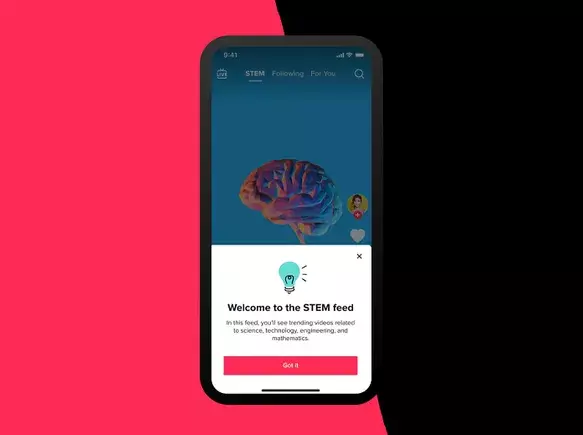In a notable shift toward enhancing educational content, TikTok is broadening its mission with the introduction of its STEM feed to a wider audience across the U.S., U.K., and Ireland. Initially launched in March 2022 for users aged 18 and under, this feature aimed to attract younger audiences to science, technology, engineering, and mathematics (STEM) topics. By April 2024, the initiative gained traction in European countries, reflecting TikTok’s growing commitment to educational engagement. Now, with its latest expansion to an all-age demographic, TikTok is not just targeting teens; it seeks to connect with users of all ages, actively promoting scientific inquiry.
TikTok’s STEM feed functions as a unique digital space where creativity and education intersect, aimed at stimulating curiosity and learning through engaging video content. As highlighted by TikTok, the feed serves numerous educational purposes: it encourages users to explore non-traditional STEM careers, facilitates collaboration among aspiring engineers, and provides coding resources for novice programmers. This co-learning environment yields a sense of community where users can confer over challenges and solutions in the comment sections, enhancing collective problem-solving experiences.
Metrics of Success and User Engagement
Since its inception, the STEM feed has amassed an impressive 200 million views, with a significant percentage of U.S. and U.K. teens utilizing it weekly. While these figures suggest a successful initiative so far, it’s essential to consider the implications of these numbers. TikTok’s engagement strategy not only bolsters interest in STEM topics but also cultivates a habit of content consumption that is more intellectually stimulating than typical scrolling. This success can serve as leverage for TikTok as it navigates ongoing criticism regarding its value proposition, particularly claims of being merely a time-wasting distraction.
Overcoming Criticism Through Educational Content
The ongoing scrutiny faced by TikTok, particularly concerning user engagement and time management, makes its educational push particularly significant. Critics argue that the platform’s addictive qualities overshadow its potential educational value; however, initiatives like the STEM feed offer a counter-narrative. By pivoting focus onto enriching scientific discussions and promoting knowledge-sharing, TikTok may alleviate some concerns surrounding its negative aspects. While this educational push is unlikely to erase all criticisms, it marks a strategic step towards enhancing the brand’s reputation in a climate of skepticism.
TikTok’s initiative to expand language support within its STEM feed suggests an understanding of inclusivity and accessibility in education. This could enhance user interactions across diverse linguistic backgrounds, ultimately fostering a more inclusive community for scientific collaboration. As users increasingly seek meaningful content on social media, TikTok’s expansion into educational territory not only enriches its content ecosystem but also sets a promising precedent for similar platforms. By effectively balancing entertainment and education, TikTok is positioning itself as a leader in innovative learning methods in the social media landscape.


Leave a Reply
You must be logged in to post a comment.